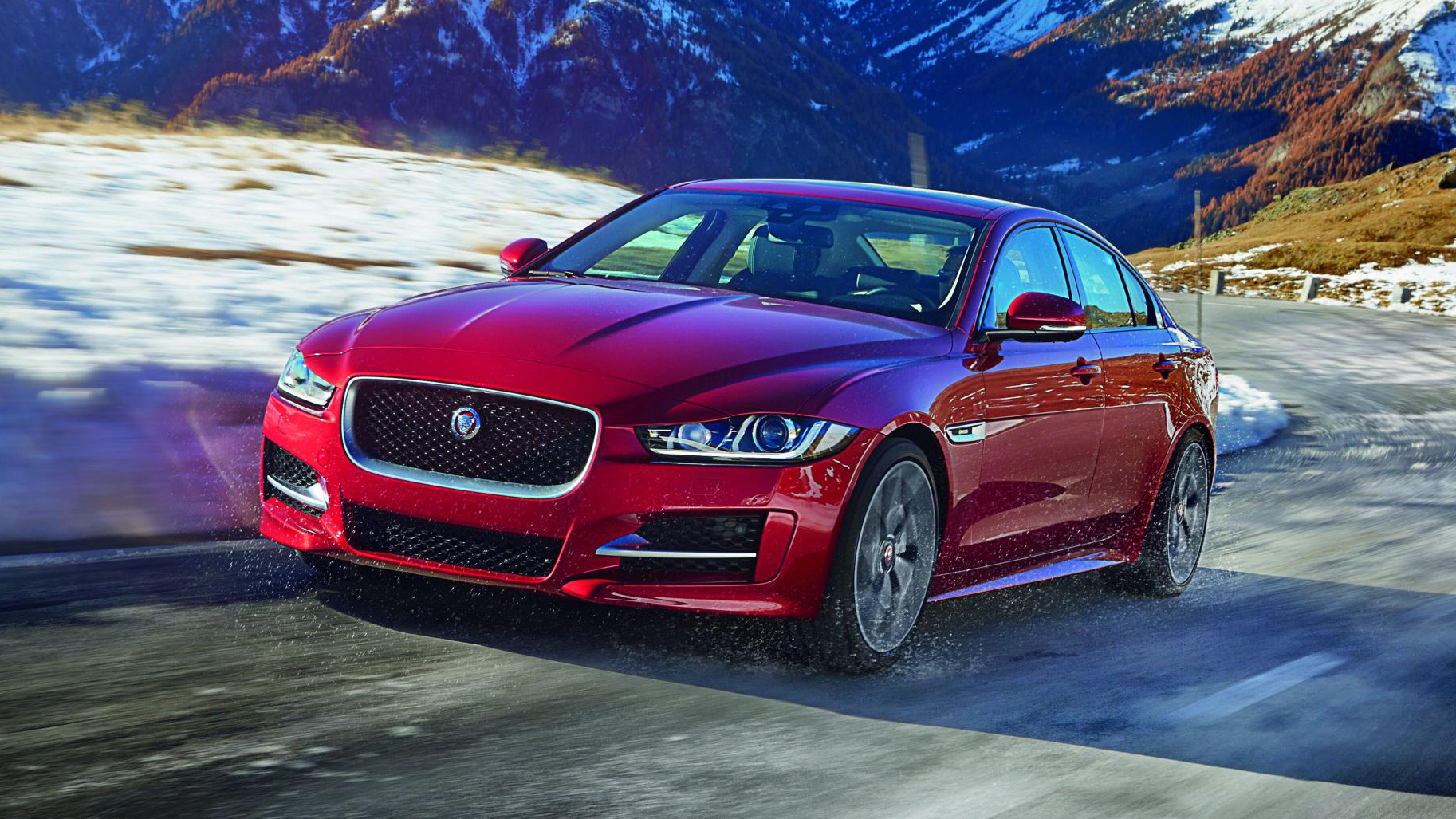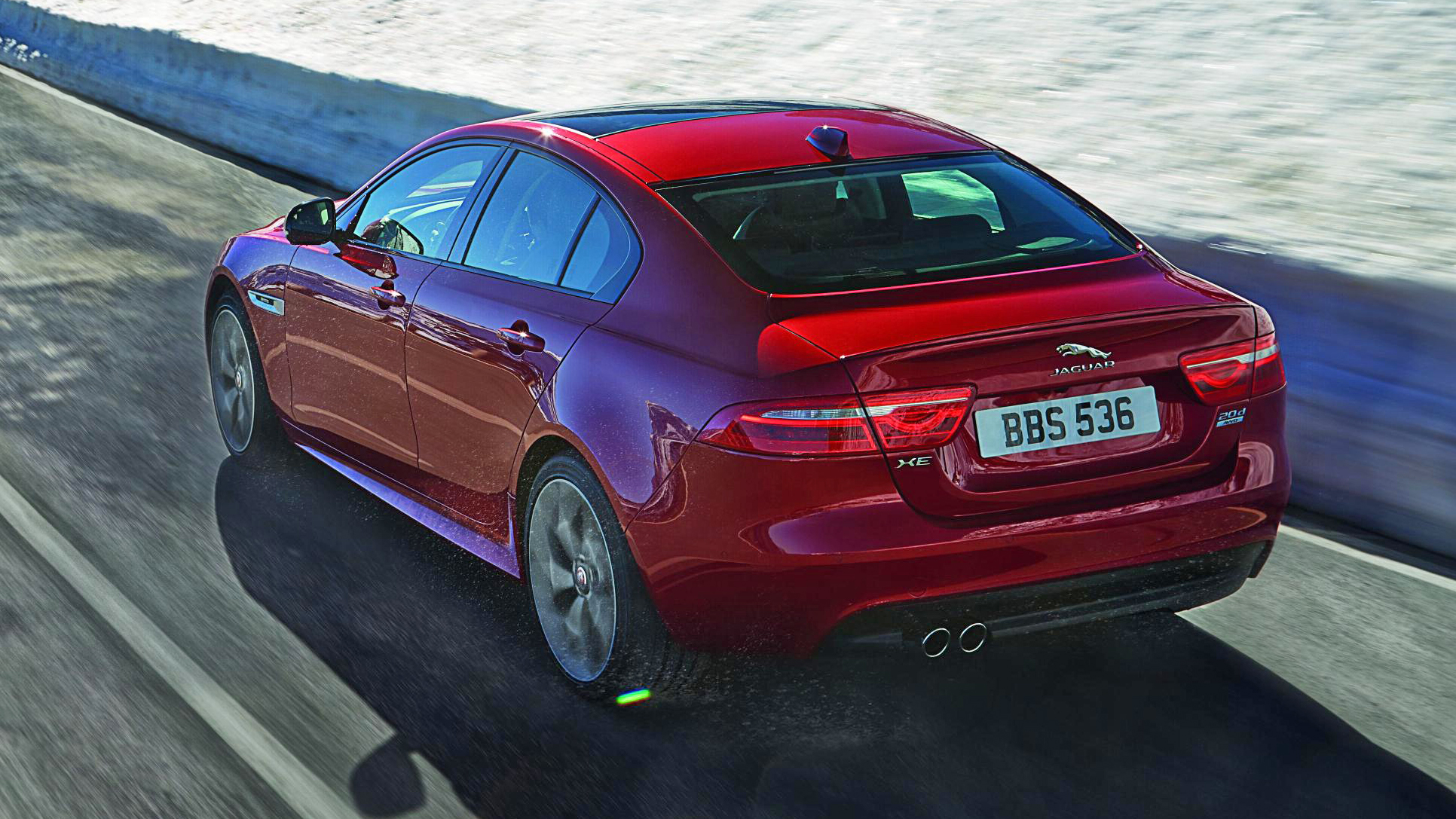
SPEC HIGHLIGHTS
- BHP
180bhp
- 0-62
7.8s
- CO2
148g/km
- Max Speed
132Mph
- Insurance
group25E
What is this?
A Jaguar XE review. We've seen Britain’s BMW 3-Series rival plenty of times before, but here it’s newly equipped with all-wheel drive, making it Jag’s take on BMW’s xDrive and Audi’s Quattro.
If you want your XE to drive both of its axles, rather than just the one at the back, you’ll need to add another £1,800 when you’re ticking the option boxes. Oh, and it’s only available if you’re choosing the 178bhp 2.0-litre diesel engine with an automatic gearbox. Prices for the Jaguar XE start at £33,825.
Tell me some technical details.
The system also appears on an equivalently specced XF saloon and actually works in a similar way to the all-wheel-drive setups found in the F-Pace and F-Type.
So, the rear wheels get 100 per cent of the engine’s power most of the time, with the front axle pre-emptively called upon when the car’s clever electronics sense you might be about to lose some grip. In theory, the car shuffles its power around before any slippery incidents occur.
Does it affect performance or fuel consumption?
A wee bit. Compared to the RWD XE, its 0-62mph time is 0.1sec slower, at 7.9secs (though both share a 140mph top speed), while its 60.1mpg fuel economy and 123g/km CO2 emissions are ten per cent worse. Over time, that could stack up to a fair difference in running costs.
Is it worth it?
It all depends on how you use your car, and just how nervous you get driving in wintry conditions. This is not a night and day transformation like the one you get by adding AWD to an F-Type. There, you’ve got a car that needs a little taming in RWD trim, but which transforms into a very accomplished (and still fun) sports car when it’s got AWD.
Top Gear
Newsletter
Thank you for subscribing to our newsletter. Look out for your regular round-up of news, reviews and offers in your inbox.
Get all the latest news, reviews and exclusives, direct to your inbox.
But a sensibly powered diesel XE? Well, that’s a car that’s hardly out of control as a rear driver. In the warm weather we sampled this AWD version, the only way to see when the power was being shuffled around was via the little electronic display you can toggle to on the infotainment screen.
All four wheels drive the car when you pull away from a standstill, but it quickly reverts to RWD, and will stay there unless you get clumsy with the speed you take into tight corners or onto roundabouts.
Perhaps a seriously wet or icy day would deliver more obvious benefits, but that’s when we suspect a good set of all-season tyres deliver even more clear results. And if you don’t wear them out quickly, you might be able to transfer those onto the next car you buy, too.
So you wouldn’t spec AWD?
Not on this particular model. The XE is a fine handling car and one which has never cried out for extra grip. Perhaps the bigger, more powerful engines – and the eventual BMW M3-rivaling Jaguar XE R – will better benefit from a clever slip-sensing system. But this diesel version simply doesn’t have enough power to cause the kind of grip issues that can’t be solved with careful driving or good tyres.
But there’s clearly a market for this, perhaps spurred on by the embarrassing amount of panic that enthrals Britain during its three-day cold snap each winter. BMW sells around 25 per cent of its 3-Series saloons with xDrive now, so you can see the logic in Jag adapting tech used elsewhere in its range to pop a similar option in the XE’s brochure. But we’d spend the £1,800 elsewhere.
Featured

Trending this week
- Car Review
BMW iX3






